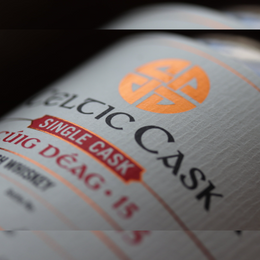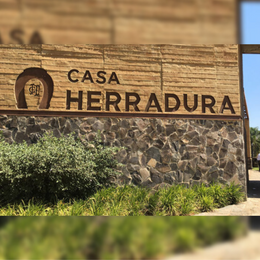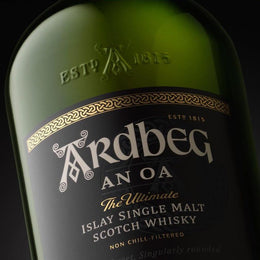 |
Wine and spirits judge, historian and bestselling author. Apart from dealing with sobering world affairs, Joe has been an entertaining educator of wines and spirits and judges at major spirits competitions. He has tasted a range that we could only dream of – from centuries-old ports, Cognacs to many of the world’s oldest whiskies. He also writes on Forbes, The Epoch Times and comments on international politics. Follow Joe on Forbes or his website. |

Over the last two decades the tequila industry has quietly grown into a multi-billion dollar industry. Shipments to wholesalers in the US are closing in on $2.5 billion dollars in turnover. Tequila consumption is now spreading around the world, not only in historic markets like France, Germany Spain and the UK but especially in nontraditional markets like Japan. China and Taiwan.
There is another boom starting to gather steam however, one that in time may grow to be as big for Mexico as the value of the tequila produced itself: tequila tourism. The tequila producing zone in Mexico consists of the state of Jalisco plus specific delineated areas in the states of Nayarit, Michoacán, Guanajuato and Tamaulipas. From a practical standpoint, more than 90% of Mexican tequila production occurs within a 50-mile radius of the town of Tequila in Jalisco state.

Historically, its storied history notwithstanding, tourism was not a prominent feature of the tequila area. Neighboring Guadalajara, Mexico’s second largest city and its financial and industrial capital, is only 32 miles away from the town of Tequila, the heart of the tequila producing zone. The roads connecting the two cities however are mostly two lane highways, prone to traffic jams and congestion. The 32-mile distance can often take one to two hours to traverse by car. Moreover, the region was poorly served by hotels and generally lacked the infrastructure typical of a developing tourist area.
In the last decade, however, tourism in the tequila region has started to blossom. Between 2006 and 2016, tourist visits to the region increased from around 200,000 visitors to approximately 1.4 million visitors. Approximately 70% of those visitors were Mexican nationals, many from Guadalajara out for the day while the balance were foreigners, mostly American.
The significant increase in Mexican visitors is notable because it mirrors an equally important shift in Mexican attitudes towards tequila. Tequila has always been deeply woven in Mexican life and culture. It is the quintessential Mexican drink; an icon which symbolizes, like the Mexican character, a fusion of Meso-American and Spanish culture. Over the last two decades, tequila has increasingly become the aspirational drink of Mexico’s rising middle class. Where once Cognac or Mexican brandy would have been the first choice of Mexico’s growing middle class, today it is increasingly finely crafted tequilas. This trend has been especially notable among Mexican women, especially Mexican millennials, who have embraced tequila as a drink that both distinguishes them from their parents while reaffirming their Mexican roots.
The Ruta del Tequila, a UNESCO recognized world heritage site, is a road network that connects Guadalajara with the towns of Magdalena, Tequila, Amatitán, Arenal, Teuchitlán, Ahualulco, Etzatlán and San Juanito. The eight towns surround the Tequila volcano, the geologic heart of the tequila zone, and span both the lowlands and highlands of Jalisco. About 130,000 visitors traverse the Ruta del Tequila each year. In addition to connecting the principal tequila production centers of Jalisco, the Ruta has become a cultural and increasingly gastronomic destination as well as a venue for various tequila themed festivals and events.

In addition, in 1997, the Tequila Express was launched. The train service connects Guadalajara to the Tequila Herradura distillery at the San Jose del Refugio Hacienda in the municipality of Amatitán. The train is called the Tequila Express because it features on-board tequila tastings and a mariachi band as it traverses Jalisco’s blue agave fields. Upon reaching the Herradura distillery, participants receive a tour of the distillery and the hacienda as well as a dinner at the Hacienda Herradura. The service only operates on weekends and on occasion on Monday as well. The train journey from Guadalajara usually last from 2 to 3 hours and costs around $95 to $115 per person depending on the class of service.
The train experience has proven to be so popular that Jose Cuervo and Patron have both organizing their own versions of the Tequila Express. The Jose Cuervo Express travels from Guadalajara to Cuervo’s La Rojena distillery in the town of Tequila. The journey offers traditional Mexican cuisine paired on board with tequilas from Jose Cuervo. There is also a tasting guided by a Maestro Tequilero, a tour of the distillery and a Mexican mariachi show. The tour ends with a toast of Cuervo’s top of the line Reserva de la Familia. The train runs every Saturday and runs about $100/person.
Patron has also launched its own version of the Tequila Express utilizing a meticulously restored 1927 vintage rail car that in the past hosted luminaries like President Franklin Roosevelt and Clark Gable. The 85-foot train car is equipped with a gourmet kitchen, dining room and three staterooms and an observation room. The car is pulled by an Amtrak locomotive and can travel anywhere on the railroads 21,000 miles of track. It is used primarily for Patron related promotional events and is available by invitation only to friends of the distillery.

The town pf tequila has been designated a pueblo magico, a magic city, by the government of Mexico and has been earmarked for aggressive tourism related development. Moreover, it has been designated as Mexico’s first pueblo magico inteligente. In collaboration with the National Geographic Society and Mondo Cuervo, the Mexican government intends to make the town of Tequila the first completely interactive tourist destination.
Additionally, the state of Jalisco has proposed to spend over $5 million dollars in various infrastructure related road improvements. More significantly, the Cuervo Foundation, a philanthropic organization created by tequila maker Casa Cuervo, has announced plans to invest US $200 million in a five-star hotel, a convention center, cultural center, commercial area, cable car system and various real estate projects.
The next big wave of tequila related tourism however will come from improving road links between the tequila area and the booming tourism industry in Puerto Vallarta and the Riviera Nayarit. The region which encompasses the city of Puerto Vallarta in Jalisco state as well as the portion of Banderas Bay to the north in Nayarit state along with the towns of Compostela, San Blas and the Riviera Nayarit received over 7 million tourists in 2016.
By nationality, roughly 70% of those tourists where Mexican nationals and the balance were foreigners. Foreign tourists however tend to stay longer however, so when measured by room nights, the mix of Mexican nationals to foreigners was about 50-50. Foreigners are the overwhelming majority during the winter months while Mexicans dominate the rest of the year.
Historically, the tequila region was a 4 to 5-hour drive from Puerto Vallarta and the Riviera Nayarit. Visits to the area would have required an overnight stay in Tequila or one of the adjacent towns on the Ruta de Tequila. The lack of hotel rooms in the area was a hugely limiting factor.
All that is about to change with the inauguration of the new Nayarit Interstate highway. The highway will connect the Nayarit Riviera with Tequila, shortening the drive to approximately 2 hours. The new highway has been designated a “presidential project” meaning that it was initiated and is slated for completion during the term of the current president, Enrique Peña Neto. Peña assumed office on December 1st, 2012 and will step down in 2018. The highway project is expected to be completed in late 2018 or early 2019.

Tourism represents half of the economic activity of Puerto Vallarta and the Nayarit Riviera, so not surprisingly the tourism industry has been quick to seize the opportunity of tequila related tourism. Scores of travel companies have announced plans to offer day trips to Tequila and the surrounding region once the new highway is open. The town of Tequila itself hosts seven distilleries, among them well known producers such as Sauza, Cuervo and Orendain.
Hotels also, especially those hotels along the Nayarit Riviera, which are ideally positioned to capitalize on the new road links, have moved to capitalize on the expected tequila related tourism boom. The Punta Mita Four Seasons Resort for example already offers its guests upscale trips to the tequila region as well as classes in blending tequila under the direction of a Master Tequilero. Guests blend their own tequila and can take home a bottle one of a kind custom tequila.
The Four Seasons is a poster child for the Riviera Nayarit, perched on Punta Mita, just 40 minutes from the Puerto Vallarta airport. It is surrounded by the white sand beaches and the turquoise waters that have made the Riviera Nayarit a tourist destination. The hotel itself sits at the end of a peninsula that juts out into Banderas Bay. The area is famous for its hotels, upscale homes and, Jack Nicklaus designed Signature Golf Courses. Forbes called Punta Mita “the secret retreat of the world top tech billionaires”. In addition to the Four Seasons, the area hosts 10 other luxury hotels, including a St Regis.
Punta Mita figured prominently in Aztec mythology as the gateway to heaven. The name Punta Mita comes from the Aztec word mictlan which means “gateway to paradise” On occasion, a still unexplained meteorological phenomenon gives the impression of a town far out at sea perched on the horizon. The Aztecs believed that town to be Paradise and Punta Mita its gateway.
For hotels like the Punta Mita Four Seasons Resort, tequila related tourism offers an important new source of guests. According to John O’Sullivan, the General Manager of the Punta Mita Four Seasons, the Resort is moving aggressively to take advantage of the burgeoning interest in tequila.
“We already carry 200 varieties of tequila in our resort and we are planning to expand our selection even more so we can well afford our guests the opportunity to taste Mexico’s finest tequilas. In addition to offering other tequila related classes and barrel sampling from our very own tequila cellar for our guests we also work with Vallarta Adventures to facilitate day trips to Tequila.”

The hotel already offers “The Ultimate Tequila Tour”, a one day trip by private helicopter to the Jose Cuervo distillery for a private tour, tasting and gourmet lunch prepared by a Four Seasons chef. On returning, guests are whisked to the hotels private tequila cellar to savor a “top of the line aged tequila served straight from the barrel” with still enough time to catch the breathtaking sunset on the beach.
There is one other little known bonus to tequila tourism. The larger distilleries all have gift stores where they sell the range of tequilas they produce. Prices are typically two thirds to three quarters less than the retail prices in the US. If you are serious about stocking your home with the world’s top of the line tequilas, a trip to Jalisco’s tequila region could be largely self-financing.
It’s difficult to estimate the full economic impact of tequila related tourism because currently most visits are add- ons to other destinations. Tourist officials estimate that presently tequila related tourism is contributing around $100 million dollars to Jalisco’s economy. A fraction to the economic output produced by its tequila producers. Tequila tourism is set to grow dramatically however and it is not inconceivable that, in time, it may become as important as the tequila industry itself.
By Joseph V. Micallef
Joseph V. Micallef is a judge and commentator on food, wines, spirits and travel. He is also a historian, best-selling author, keynote speaker and syndicated columnist As a journalist and former war correspondent he has written on an eclectic mix of topics from wines, spirits and travel, to military history and world affairs. For 30+ years he was the CEO and Senior Producer of a media company.
Joe has also been a judge for a variety of international wines and spirits competitions, including the International Wines and Spirits Competition, World Drinks Awards, World Whisky Awards, San Francisco International Wine Competition, American Distilling Institute Craft Spirits Awards, and the Irish Whiskey Awards. Along with judging, he spends his spare time making wine in Oregon.
He holds the Diploma in Wines and Spirits from the Wine and Spirits Education Trust (London). He is also a member of the Advisory Board of the Council of Whiskey Masters. The Advisory Board’s two dozen members are widely considered the leading experts on whisky in the world.
He has spoken at a variety of professional venues, including the Institute of Strategic Studies (London), the NATO Defense College (Rome), the World Future Society and a large number of universities, military and other organizations on a variety of topics dealing with military and current affairs. He has also appeared as a commentator on a variety of cable news networks.
His recent books include, Scotch Whisky: It’s History, Production and Appreciation, Understanding World War I: A Concise History (part of a 12 episode made for television documentary), and Islamic State: Its History, Ideology and Challenge. Additional books on Tequila and on Italian Wines are forthcoming.
He has written, directed, and produced dozens of documentaries on military history and current affairs.
Joe is also an opinion columnist for The Epoch Times where he writes about national security and international affairs, and a contributor to Forbes where he writes about wines, spirits and travel to the dusty corners of the world. In addition to writing, he is also the International Editor for the Irish Whiskey Magazine.
He has spent more than 20 years judging wines and spirits and lecturing and writing about them, and looks forward to many more. Grab a drink with him at the bar if you have the chance – suffice to say, he's not your average Joe.







